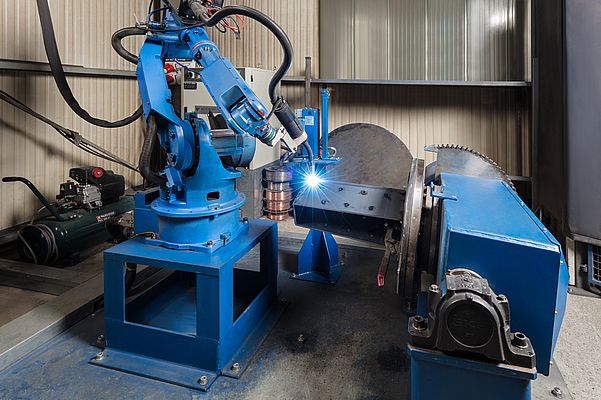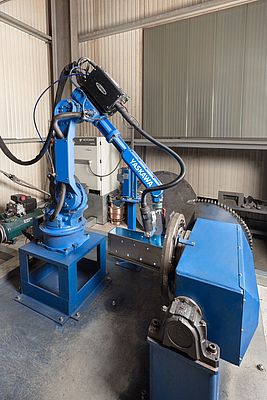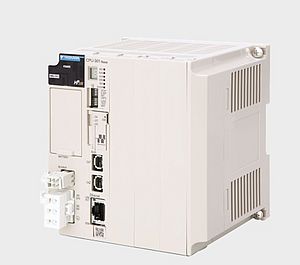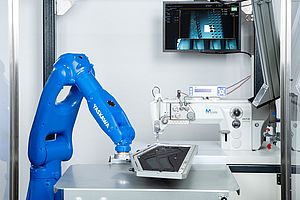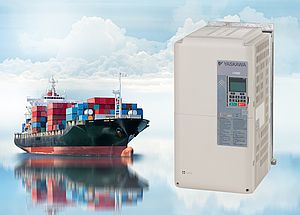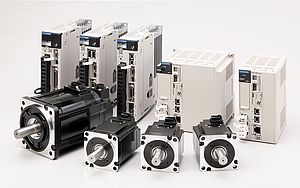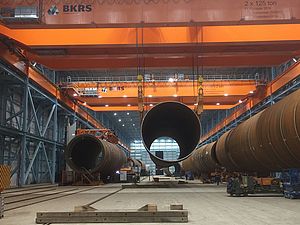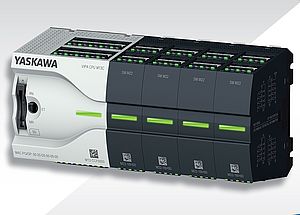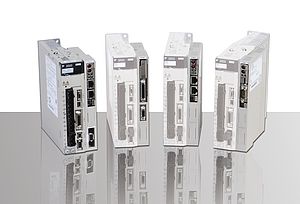Blankenburg in the Harz Mountains is widely known as a health resort. Only industry insiders will be aware that this small town is also home to sophisticated welding constructions for customers all over the world. A look behind the scenes at Metallbau & Schweißtechnologie Zentrum GmbH Blankenburg reveals how bundled competence and high-tech machinery has enabled the company to achieve global recognition.
With around 50 employees, the company may not be one of the biggest, but it places great emphasis on ‘welding expertise’. Company founder Dipl.-Ing. Wilhelm Krüger senior, together with his sons Dipl.-Ing. Wilhelm Krüger junior and Masch.-Ing. Martin Krüger and the complete team, dispose of joining technology know-how that is in demand around the globe.
In the field of welding technology, its welding engineers are proficient in many high-tech joining processes: “Rather than standard procedures, our main focus is on the manufacture of high-quality, series-ready components and special designs in many material combinations. Wherever an intricate metallurgical task presents itself, we recognise the challenge and address ourselves to this exciting assignment,” says Wilhelm Krüger senior.
Further specialities of the company are the high level of vertical integration and a high-tech machine park that comprises more machines than employees. In addition to a Yaskawa welding robot, it includes laser, plasma and flame cutters as well as bending machines, press brakes and automatic saws in a variety of designs, and everything else a metal processing company needs to independently produce welding constructions.
“Thanks to this equipment, today we are able to supply our customers in the engineering, plant and rail vehicle construction industries with complex welded assemblies and system components from one source. Our extensive machine park gives us the advantage that we can apply the most effective technology for every scenario without time-consuming retooling,” says Wilhelm Krüger senior. “The instant availability of the technology, high level of vertical integration and our own jig construction ensure maximum flexibility. We can deliver quickly, reliably and in best manufacturing quality – and that is greatly appreciated by our customers all over the world”.
No alternative to automated welding
When faced with more complex welding tasks, the experts at Metallbau & Schweißtechnologie Zentrum GmbH Blankenburg see no alternative to the mechanization of the welding machine or robot. The human anatomy quickly reaches its limits when it comes to producing complex weld seams with the highest degree of precision. For this reason, over ten years ago the company decided to invest in a high-performance robot welding cell from Yaskawa.
The decision was not easy, calling for a careful performance comparison of all available robots. Subsequently, the company opted for a MOTOMAN HP20 with dual-axis positioner. But it was a good choice: this six-axis welding robot is still today considered to be one of the best on the market. With an exemplary range of 1.717 millimetres, the HP20 is unbelievably compact. And in terms of dynamism, with an impressive repeat accuracy of 0.06 millimetres, it can match any competitor on the world market.
“The HP20 is a jack of all trades and delivers top performance in all situations. We use it for a wide range of experiments, metallurgical research applications, welding tasks on castings, welding individual parts, and medium-sized production runs. The unit has been mastering the challenge without a problem for the past ten years, during which time it has paid for itself ten times over,” Krüger beams.
A standard Yaskawa DK-1500 rotary tilt table serves as a positioner. While the rotary axis is endlessly rotating, the range of movement of the tilt axis is +/- 90 degrees. The DK-1500 is mounted on both sides and has a maximum payload of 1,500 kg, meaning that there are no restrictions for heavy workpieces. The eight axes – six on the robot and two on the positioner – are controlled by the proven Yaskawa Controller DX100.
Hundreds of programs are meanwhile saved in the unit, and for recurring orders MSZ still has most of the required fixtures in storage, so that these are immediately available. Customers are pleasantly surprised to learn that complex parts manufactured ten years previously can be reordered and delivered within the space of a few days.
Flexibility without limits
Wilhelm Krüger is still enthusiastic about the flexibility of the unit. “In order to perform our broad scope of services with a minimum of restrictions, we rely on an intelligent pulse welding power source TPS/i 5000 from Fronius with a high-performance processor and high-speed bus. It enables us to transfer high data volumes in a short period of time and implement fast control loops. In conjunction with our push-pull robot welding torch, we achieve an extremely stable arc and are able to weld filler materials smaller than 0.8 mm Ø.”
Using the Fronius Remote Control Unit RCU 5000i with full text display, the operator can comfortably and reliably control the welding process from outside the cell. If necessary, he can actively intervene in the process at any time and adjust the parameters. The result is higher welding speed, process reliability and outstanding welding results even under the most demanding conditions.
Weld seam quality of vital importance
However diverse the welding tasks at Metallbau & Schweißtechnologie Zentrum GmbH Blankenburg may be, they all have one aspect in common: high demands are placed on the weld seam quality. That is hardly surprising, as the company has committed itself to the most complex joining operations where quality plays a key role.
The weld seam quality depends on several parameters, as Wilhelm Krüger senior points out: “Robot performance, welding equipment quality and the programmer’s welding expertise all contribute by equal measure to the welding result. With many parts we perform various weld seam analyses, from visual to destructive, in order to guarantee the required quality of the weld seams.” It goes without saying that the company also has the industry-specific qualifications and certifications in this field.
In the near future Metallbau & Schweißtechnologie Zentrum GmbH Blankenburg is proposing to invest in a further robot welding cell. Taking flexibility to the extreme, the company will be focusing increasingly on the possibilities of offline programming and a multi-axis positioner. As yet, it must still be decided which robot will be used. But one thing is certain, as Wilhelm Krüger senior confides: “It will most certainly be a Yaskawa MOTOMAN six-axis robot.”


